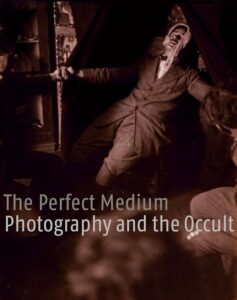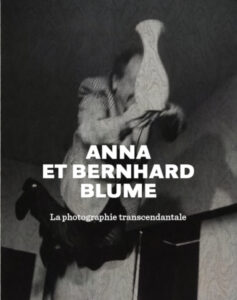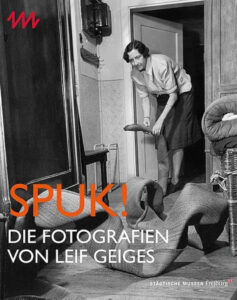Aesthetic practice has dealt with the ‘occult’ in many different ways, as has become increasingly apparent in recent years through academic studies or in the context of exhibition projects. The exhibition “From Munch to Mondrian. 1900-1915”, which was organized by Veit Loers at the Schirn Kunsthalle Frankfurt in 1995, proved to be groundbreaking in the field of fine art in German-speaking countries. Many of the themes covered there inspired further exhibitions and research projects in the years that followed, with IGPP involved from the outset.
Parapsychology and Paranormal Phenomena
Art and occultism
Introduction
One focus of this research area has been and continues to be the exploration of the relationship between the photographic medium and occultism, focusing on the significance of images in the history of spiritualism, occultism and parapsychology as well as the relevance of occult motifs and ideas in photographic art. In this context, the photographic holdings in the archive of IGPP are of great importance, which have since been shown in a large number of exhibitions and have been scientifically catalogued. Of particular note is the exhibition “The Perfect Medium – Photography and the Occult” (Metropolitan Museum of Art, New York, 2005), which was co-organized by IGPP (Fig. 1) Historical image material and its connection to photographic art were presented, for example, in the exhibition “Anna & Bernhard Blume. La photographie transcendantale” (Centre Pompidou, Paris, 2015) (Fig. 2), while the mass media use of photography to propagate Hans Bender’s initial research agenda at IGPP was the subject of the exhibition “poltergeist phenomena! The Photographs of Leif Geiges” (Augustinermuseum, Freiburg i. Br., 2021) (fig. 3).

Fig. 1

Fig. 2

Fig. 3
In addition, all forms of connections between fine art, museum practice and occultism are documented, such as with regard to thematic focuses, theoretical concepts, public criticism or academic reception. Attention is also paid to so-called “media art”, which was already relevant in the early history of IGPP and which has experienced a great increase in significance in recent years, for example due to the reception of the work of the spiritualist artist Hilma af Klimt.